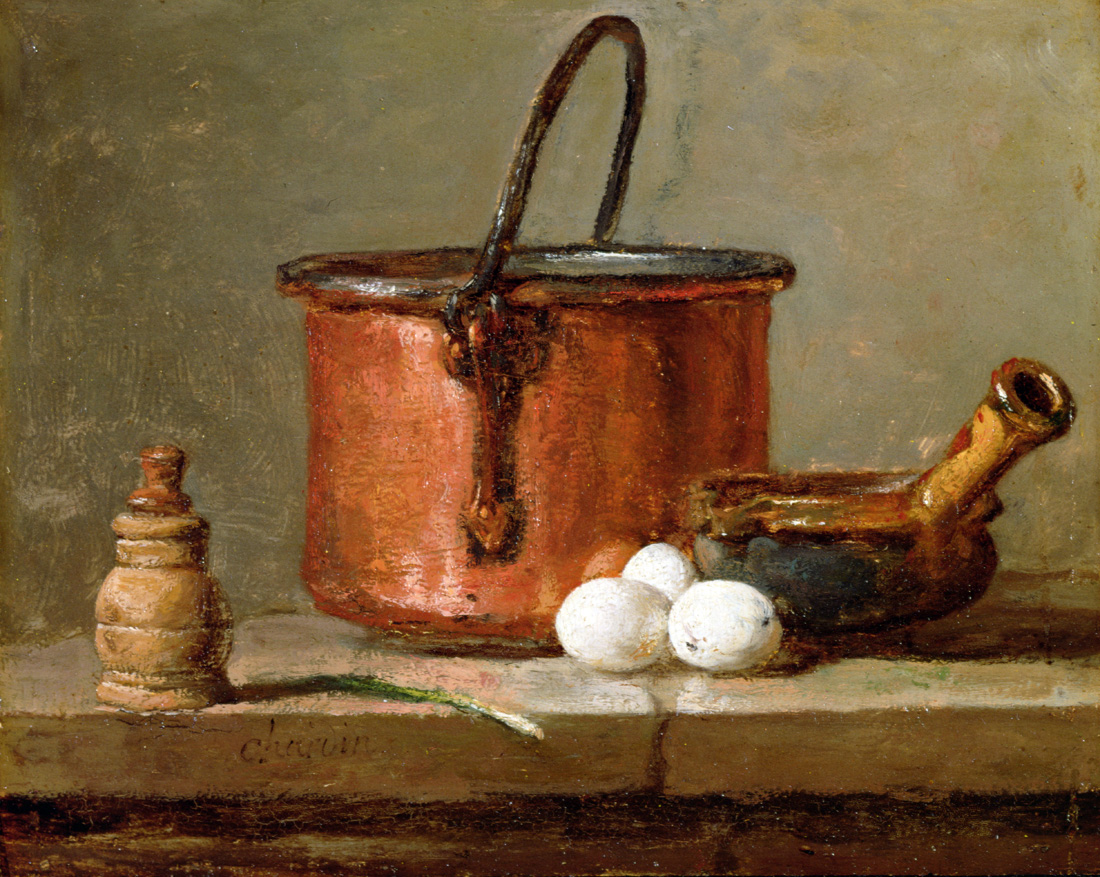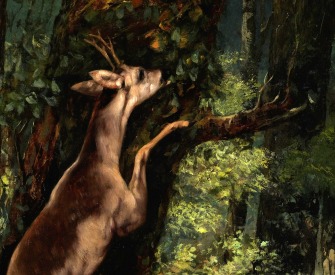The people of Chicago saw the government inspectors in Packingtown, and they all took that to mean that they were protected from diseased meat; they did not understand that these 163 inspectors had been appointed at the request of the packers, and that they were paid by the United States government to certify that all the diseased meat was kept in the state. They had no authority beyond that, for the inspection of meat to be sold in the city and state the whole force in Packingtown consisted of three henchmen of the local political machine! And shortly afterward one of these, a physician, made the discovery that the carcasses of steers which had been condemned as tubercular by the government inspectors, and which therefore contained ptomaines, which are deadly poisons, were left upon an open platform and carted away to be sold in the city; and so he insisted that these carcasses be treated with an injection of kerosene—and was ordered to resign the same week! So indignant were the packers that they went further, and compelled the mayor to abolish the whole bureau of inspection, so that since then there has not been even a pretense of any interference with the graft. There was said to be two thousand dollars a week hush money from the tubercular steers alone, and as much again from the hogs which had died of cholera on the trains, and which you might see any day being loaded into boxcars and hauled away to a place called Globe, in Indiana, where they made a fancy grade of lard.
Jurgis heard of these things little by little, in the gossip of those who were obliged to perpetrate them. It seemed as if every time you met a person from a new department, you heard of new swindles and new crimes. There was, for instance, a Lithuanian who was a cattle butcher for a plant which killed meat for canning only; and to hear this man describe the animals which came to his place would have been worthwhile for a Dante or an Émile Zola. It seemed that they must have agencies all over the country, to hunt out old and crippled and diseased cattle to be canned. There were cattle which had been fed on “whisky malt,” the refuse of the breweries, and had become what the men called “steerly”—which means covered with boils. It was a nasty job killing these, for when you plunged your knife into them they would burst and splash foul-smelling stuff into your face; and when a man’s sleeves were smeared with blood and his hands steeped in it, how was he ever to wipe his face or to clear his eyes so that he could see? It was stuff such as this that made the “embalmed beef” that had killed several times as many United States soldiers as all the bullets of the Spaniards; only the army beef, besides, was not fresh canned, it was old stuff that had been lying for years in the cellars.
Then one Sunday evening, Jurgis sat puffing his pipe by the kitchen stove, and talking with an old fellow who worked in the canning rooms at Durham’s; and so Jurgis learned a few things about the great and only Durham canned goods, which had become a national institution. They were regular alchemists at Durham’s; they advertised a mushroom ketchup, and the men who made it did not know what a mushroom looked like. They advertised “potted chicken”—and it was like the boarding-house soup of the comic papers, through which a chicken had walked with rubbers on. Perhaps they had a secret process for making chickens chemically—who knows? said Jurgis’ friend; the things that went into the mixture were tripe, the fat of pork, beef suet, hearts of beef, and finally the waste ends of veal, when they had any. They put these up in several grades and sold them at several prices, but the contents of the cans all came out of the same hopper. And then there was “potted game” and “potted grouse,” “potted ham,” and “deviled ham”—de-vyled, as the men called it. “De-vyled” ham was made out of the waste ends of smoked beef that were too small to be sliced by the machines; and also tripe, dyed with chemicals so that it would not show white; and trimmings of hams and corned beef; and potatoes, skins and all; and finally the hard cartilaginous gullets of beef, after the tongues had been cut out. All this ingenious mixture was ground up and flavored with spices to make it taste like something. Anybody who could invent a new imitation had been sure of a fortune from old Durham, said Jurgis’ informant, but it was hard to think of anything new in a place where so many sharp wits had been at work for so long, where men welcomed tuberculosis in the cattle they were feeding because it made them fatten more quickly; and where they bought up all the old rancid butter left over in the grocery stores of a continent and “oxidized” it by a forced-air process to take away the odor, rechurned it with skim milk, and sold it in bricks in the cities! Up to a year or two ago it had been the custom to kill horses in the yards—ostensibly for fertilizer, but after long agitation the newspapers had been able to make the public realize that the horses were being canned. Now it was against the law to kill horses in Packingtown, and the law was really complied with—for the present, at any rate. Any day, however, one might see sharp-horned and shaggy-haired creatures running with the sheep—and yet what a job you would have to get the public to believe that a good part of what it buys for lamb and mutton is really goat’s flesh!

Still Life with Tinned Copper Pot, Pepper Box, Leek, Three Eggs, and a Casserole, by Jean-Siméon Chardin, c. 1732. Detroit Institute of the Arts, Michigan.
There was another interesting set of statistics that a person might have gathered in Packingtown—those of the various afflictions of the workers. When Jurgis had first inspected the packing plants, he had marveled while he listened to the tale of all the things that were made out of the carcasses of animals, and of all the lesser industries that were maintained there; now he found that each one of these lesser industries was a separate little inferno, in its way as horrible as the killing beds, the source and fountain of them all. The workers in each of them had their own peculiar diseases. And the wandering visitor might be skeptical about all the swindles, but he could not be skeptical about these, for the worker bore the evidence of them about on his own person—generally he had only to hold out his hand.
There were the men in the pickle rooms, for instance; scarce a one of these that had not some spot of horror on his person. Let a man so much as scrape his finger pushing a truck in the pickle rooms, and he might have a sore that would put him out of the world; all the joints in his fingers might be eaten by the acid, one by one. Of the butchers and floorsmen, the beef boners and trimmers, and all those who used knives, you could scarcely find a person who had the use of his thumb; time and time again the base of it had been slashed, till it was a mere lump of flesh against which the man pressed the knife to hold it. The hands of these men would be criss-crossed with cuts, until you could no longer pretend to count them or to trace them. They would have no nails—they had worn them off pulling hides; their knuckles were swollen so that their fingers spread out like a fan. There were men who worked in the cooking rooms, in the midst of steam and sickening odors, by artificial light; in these rooms the germs of tuberculosis might live for two years, but the supply was renewed every hour. There were the beef luggers, who carried two-hundred-pound quarters into the refrigerator cars, a fearful kind of work that began at four o’clock in the morning and that wore out the most powerful men in a few years. There were those who worked in the chilling rooms and whose special disease was rheumatism; the time limit that a man could work in the chilling rooms was said to be five years. There were the wool pluckers, whose hands went to pieces even sooner than the hands of the pickle men, for the pelts of the sheep had to be painted with acid to loosen the wool, and then the pluckers had to pull out this wool with their bare hands, till the acid had eaten their fingers off. There were those who made the tins for the canned meat, and their hands, too, were a maze of cuts, and each cut represented a chance for blood poisoning. Some worked at the stamping machines, and it was very seldom that one could work long there at the pace that was set and not give out and forget himself and have a part of his hand chopped off. There were the “hoisters,” as they were called, whose task it was to press the lever which lifted the dead cattle off the floor. They ran along upon a rafter peering down through the damp and the steam, and as old Durham’s architects had not built the killing room for the convenience of the hoisters, at every few feet they would have to stoop under a beam—say four feet above the one they ran on—which got them into the habit of stooping, so that in a few years they would be walking like chimpanzees. Worst of any, however, were the fertilizer men, and those who served in the cooking rooms. These people could not be shown to the visitor, for the odor of a fertilizer man would scare any ordinary visitor at a hundred yards, and as for the other men, who worked in tank rooms full of steam, and in some of which there were open vats near the level of the floor, their peculiar trouble was that they fell into the vats, and when they were fished out, there was never enough of them left to be worth exhibiting—sometimes they would be overlooked for days, till all but the bones of them had gone out to the world as Durham’s Pure Leaf Lard!
From The Jungle. This novel aroused much public indignation—not about the conditions of the workers but of the food, leading to the passage of the Pure Food and Drug Act and to Sinclair remarking, “I aimed at the public’s heart, and by accident I hit it in the stomach.” He wrote many novels, among them Oil!, based on the Teapot Dome Scandal, and Boston, premised on the Sacco-Vanzetti trial. He died at the age of ninety in 1968.
Back to Issue






